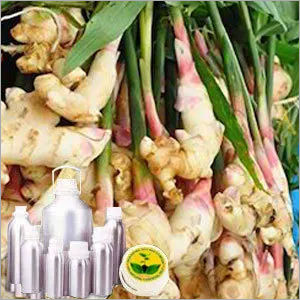Gingergrass Oil
 | Botonical Name | : | Cymbopogon martini var. sofia |
 | CAS # | : | 8023-92-5 |
 | Country of Origin | : | India |
 | Color & Odor | : | Dark yellow Clear oily liquid with Fatty, sweet herbal, grassy, spicy note |
 | Solubility | : | Insoluble in water and soluble in oils. |
 | Specific Gravity | : | 0.9250 - 0.9390 @ 20°C |
 | Optical Rotation | : | -30.0 to 2.0 @ 20°C |
 | Refractive Index | : | 1.4850 - 1.4950 @ 20°C |
 | Flash Point | : | >90°C |
 | Major Constituents | : | Limonene, Elemicin, Camphene |
 | Plant Part Used | : | Grass |
 | Extraction Method | : | Steam Distillation |
DESCRIPTION:
Steam distilled from herbaceous ginger grass, this aromatic oil has woody smell. Ginger grass Oil has vital role in emotional healing process. Known for its spicy smell, ginger grass essential oil can be taken via inhalation, as diffuser and also as massage oil. CONSTITUENTS:
Elemicin, Delta-cadinene, Beta-Caryophyllene, Limonene, Camphene, Alpha-PineneAROMATIC SUMMARY / NOTE / STRENGTH OF AROMA:
A middle note with a medium aroma and a sharp, green scent with peppery and lemony undertones. BLENDS WITH:
This oil blends well with Cananga, Geranium, Rosewood, Sandalwood, Cedarwood and other essential oils that are floral in nature. COMMON NAMES:
Ginger grass essential Oil USES:
Its expectorant attributes are effective in preventing emergence of mucus and phlegm in respiratory tract. The antibacterial attributes of this fragrant oil cure blackheads and pimples. The analgesic properties of Ginger grass Oil relieve stiff muscle condition, muscular and joint pain and inflammation.


































